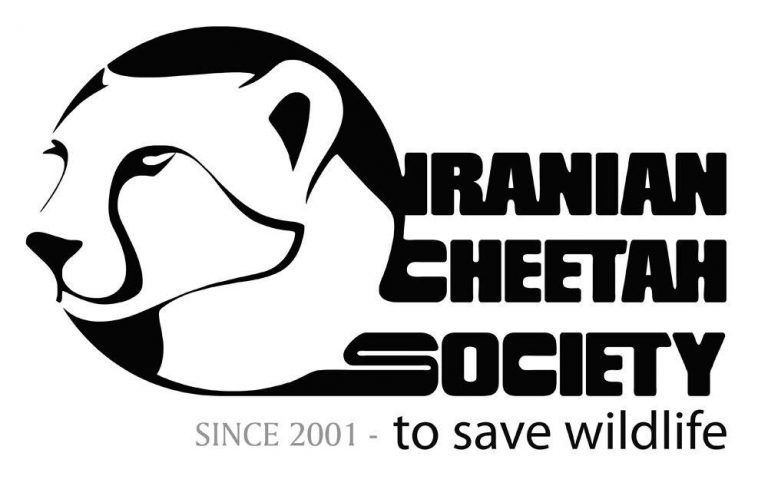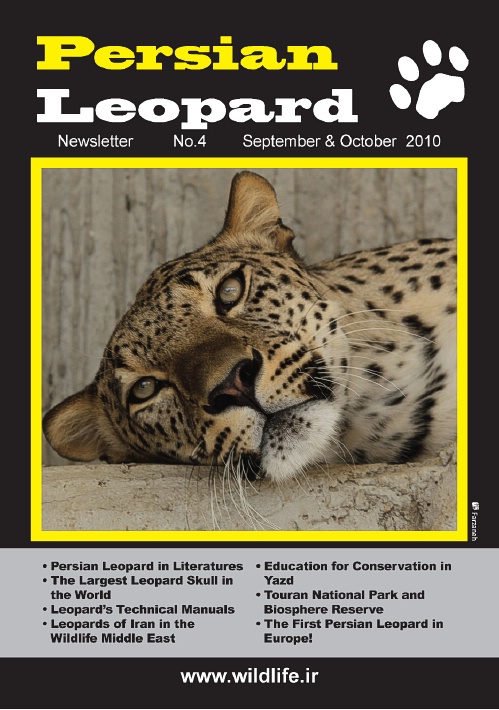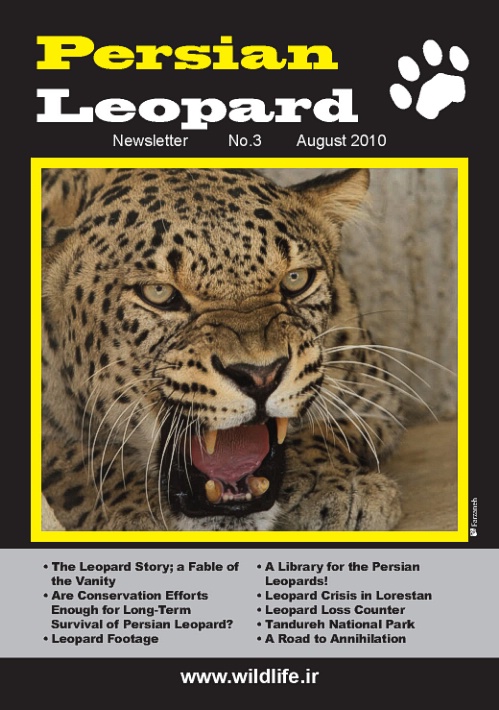As the largest vehicle manufacturing company in the Middle East, Iran Khodro Company officially joined efforts to conserve the critically endangered Asiatic cheetah in Iran. Following of several meetings between the Iranian Cheetah Society (ICS) and Iran Khodro Company in Tehran, a MoU was signed by the ICS
مدیر سایت
Fourth issue of Persian Leopard Newsletter is released.
On 8 July 2010, final ceremony for the first National Festival of Iranian Youth was held in Tehran, Iran. The festival was organized in 14 categories with numerous attendants from across the country as well as Iranian youths abroad. Mohammad Farhadinia was selected to win the First Iranian Youth Award on category
According to an ongoing survey carried out since April 2005 in the Sarigol National Park; northeastern Iran, the mating season of the Persian Leopard extends from mid-January to a peak in mid-Februar. Males and females associate briefly and just after the short mating period, they separate. We never found the leopards to raise more than two cubs. Most observations ofr leopard families were made in areas of high prey density. Our data verified by camera trapping indicate that track size alone is not reliable for the accurate identification of leopard age/sex categories.
You can download full paper here.
Reproductive ecology of the Persian leopard in Sarigol National Park, northeastern Iran (2009)
As one of the most elusive cats of Iran, the lynx has been rarely studied in the country and data about its distribution and status was awfully scarce. Accordingly, a joint program between the Iranian Cheetah Society (ICS) and Iranian Department of Environment (DOE) was initiated in 2007 to study the species status across the country.
Meanwhile, the survey was suported by the IUCN/Cat Specialist Group via training Ehsan Moqanaki who is leading the program in KORA center, Switzerland. Based on status assessment of the lynx in the country, a reserve in western country was selected where is supposed to have an appropriate population and habitat condition to launch the first ecological research as a pilot site. After initial field investigations, camera traps were deployed to find the lynx trails and game guards were trained with respect to lynx ecology and field surveys techniques. The draft of the lynx status assessment in Iran has been finished and is going to be published soon.

Eurasian lynx on wild sheep kill in Anguran Wildlife Refuge, western Iran (
As globally known city for its severe earthquake in 2003, Bam has been within historical range of the Asiatic cheetah in Iran and presently it is one of suspected sites for the species in southern Iran. Bam’s orphaned students celebrated Cheetah Day on 5 September in a local charity NGO. Attended by more than 65 students ranging from 7 to 15 years, the festival composed of various educational programs on the cheetah. A theatre illustrated Marita’s story with some cheetah dances, all implemented by 25 enthusiastic kids. Finally, they received educational materials donated by the Iranian Cheetah Society (ICS).

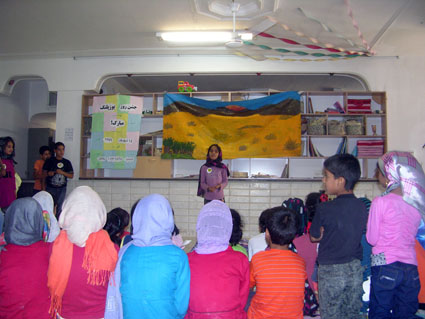
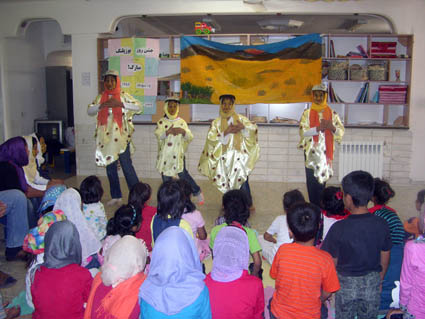
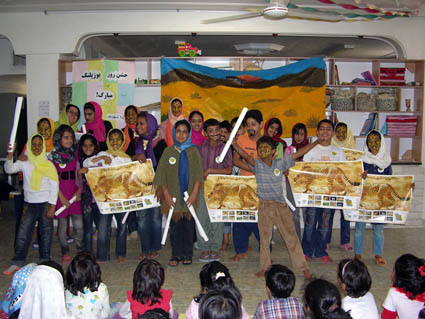
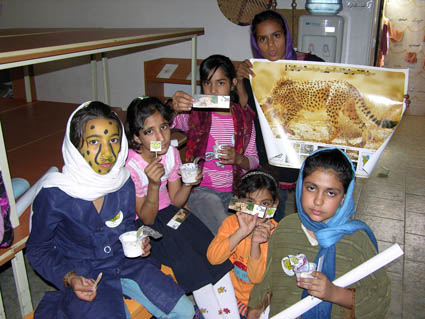
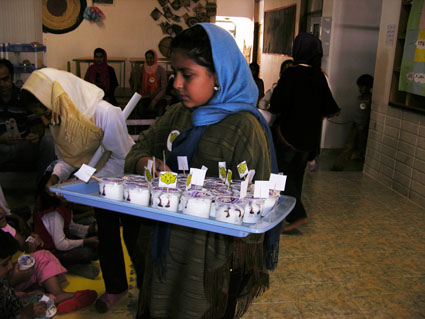
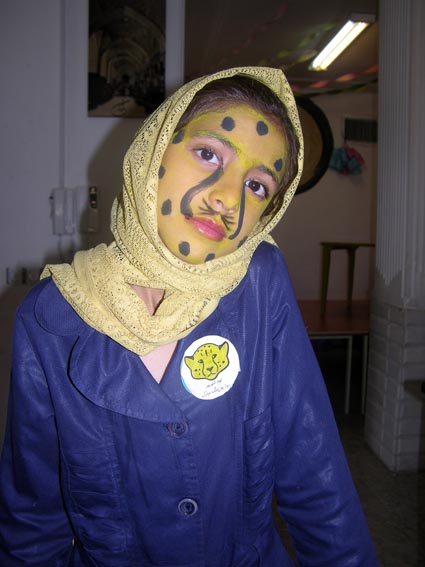
It is now four years that 31 August is celebrated as Cheetah Day in Iran which has been a great milestone for the cheetah conservation since proposition in 2007. The event has been organized in order to draw the Iranian community’s attention toward the endangered status of the cheetah in Iran as well as more emphasis on improving conservation efforts of the creature across the country. Since 2007, the Cheetah Day has been celebrated by various Iranian NGOs and the Iranian Department of the Environment (DoE)’s Conservation of the Asiatic Cheetah Project in which numerous educational programs were held inside the main cities as well as local communities around the cheetah habitat. In 2008, a number of sessions, seminars and discussion groups were formed around the Cheetah Day to exchange data about the Asiatic cheetah and to share knowledge. Meanwhile, the Iranian mass media had a major role to celebrate the event. With respect to intensive public welcome of Cheetah Day programs, the Iranian Cheetah Society (ICS) invites all organizations, societies, and persons who are willing to corporate in this field all over the country.
On 31 August 1994, a family of Iranian cheetahs were attacked by a number of people near Bafq Protected Area, central Iran. The mother run away, two cubs were killed, but the last cub was saved and lived in Pardisan Zoo, Tehran until 2003. She, namely Marita, was the only captive Iranian cheetah in the world and was a symbol for lack of awareness among local people in Iran which has been always considered as one of the main initiatives for the Iranian Cheetah Society since establishment in 2001.
The Iranian Cheetah Society (ICS) would like to propose the International Cheetah Day to all the relevant NGOs and persons in order to spread the knowledge of the cheetah and its gloomy future to the people worldwide and will shake hand to all the enthusiastic organizations and people. Please contact us for further details through [email protected].
Statement of the Asiatic Cheetah Protection Day
It has been 14 years since the day when a rare young cheetah was rescued from an unavoidable death. Local people were scared of the young cheetah and her family. Their fear originated from their unawareness, maybe if they had known that the cheetah was not a threat to them and their livestock, and if they had known cheetah
Sand Caspian seals show was held to celebrate International Year of Biodiversity in Babolsar, northern Iran. A total of 15 seal statues were constructed during a festival at the sea shore.
Mojtaba Ramzi, ICS volunteer who designs animal statues professionally, developed the seals based on New Art approach to attract visitor’s attention toward the endangered status of the Caspian seals in the region. As the only mammal in Caspian Sea, the seals have experienced a severe decline in number during the past decade, mainly in northern sea. However, they are subject to regular killing by local fishermen in south at the Iranian shores.
Caspian seal group was successful to increase people’s awareness about these creatures, as an educational brochure was distributed beside the festival. Interestingly, even most of local visitors were not aware that such a mammal exists in their shores, except some fishermen.
On the 2nd day of the festival, the statuses became destroyed due to wind and kid’s playing which indicated their fragile situation for the people. Ramzi added “our goal was to show the people how much the Caspian seals are endangered of extinction”. He won the festival special award due to emphasis on importance of biodiversity in his art designs.
The Caspian seal show was part of 2 days National Festival for Sand Statues in Babolsar in early August 2010.







“Third issue of Persian Leopard Newsletter is released. You read the following topics on the newsletter:
The Leopard Story; a Fable of the Vanity Are Conservation Efforts Enough for Long-Term Survival of Persian Leopard?
- Leopard Footage
- A Library for the Persian Leopards!
- Leopard Crisis in Lorestan
- Leopard Loss Counter
- Tandureh National Park
- A Road to Annihilation
The Persian Leopard Newsletter is bi-monthly electronic magazine composing of the latest activities, projects, and events on the largest existing cat in Iran, published by the Iranian Cheetah Society (ICS) to celebrate 2010 as the year of the leopard in Iran. You can download the issue as well as previous ones on “Year of Leopard” section on the ICS website. “
In order to spread knowledge about the Persian leopard in Iran as well as abroad, a collection of papers and articles about the creature has been established on the ICS website. It is comprised of more than 30 documents published by various authors on different ecological aspects of the Persian leopard which can be downloaded as PDF. Less than 10 papers have been compiled by the Iranian authors which emphasizes on necessity of more attention by the Iranian scientific community to study and conserve this large cat.
The Persian Leopard Library is part of the ongoing programs by the Iranian Cheetah Society (ICS) to celebrate 2010 as the Year of Leopard in Iran. The library is accessible through here.
